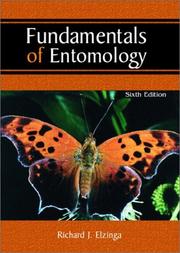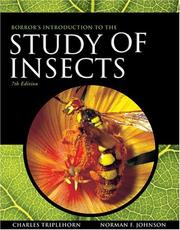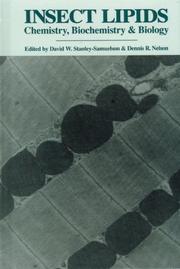| Listing 1 - 10 of 86 | << page >> |
Sort by
|
Dissertation
ISBN: 9789086497010 Year: 2014 Publisher: Leuven Katholieke Universiteit Leuven
Abstract | Keywords | Export | Availability | Bookmark
 Loading...
Loading...Choose an application
- Reference Manager
- EndNote
- RefWorks (Direct export to RefWorks)
In insect societies, intracolonial conflict frequently arises because of conflicting genetic interests of non-clonal individuals. This conflict may be avoided by increasing genetic relatedness among colony members. This may be achieved through asexual or clonal reproduction by which conflicting genetic interests are silenced. An additional mechanism to resolve conflict over male production is policing, a mechanism whereby queens or workers aggress reproductive workers and/or cannibalize worker-laid eggs. To this end, workers need accurate cues that inform them on the presence of a fecund queen, because in queenless colonies, workers will cease policing and start reproducing. Queen caste-specific cuticular hydrocarbons can prevent worker ovary activation in different species belonging to groups of social insects that evolved eusociality idependently, i.e. the common wasp (Vespula vulgaris), a bumblebee (Bombus terrestris), and a Desert ant (Cataglyphis iberica). Interestingly, in all three species all identified queen pheromones are non-volatile linear and methyl-branched alkanes. In addition, comparative analysis and ancestral state reconstruction suggests that these queen pheromones evolved from conserved signals in solitary ancestors. Hence, hydrocarbons appear to have played a key role in the evolution of reproductive division of labour in social insects. This hypothesis is further strengthened by the finding that a methyl-branched alkane is used as a queen egg-marking pheromone in the common wasp. Together, these results demonstrate that saturated hydrocarbons present on the queens cuticle and eggs can fulfil the important role of queen pheromones. Intercolonial conflict arises when unrelated individuals infiltrate colonies to benefit nutritionally or reproductively from the hosts resources. In the case of brood parasitism, individuals forgo brood care and have their brood reared by their host. A special case of brood parasitism, queen reproductive parasitism, occurs in the stingless bee Melipona scutellaris. In this species, queen parasitism is common, with 1/3 of all take-overs being undertaken by alien queens. Furthermore, alien queens actively seek out queenless colonies, and employ a specific strategy to enter their target colonies. Lone queens enter colonies in the evening when guarding efficiency is significantly reduced, and thus maximize their chances on a successful take-over.Interspecific conflict occurs between members of different species. Parasites of social insect species might employ chemical mimicry to infiltrate colonies and avoid attack. A parasitic beetle, Metoecus paradoxus, uses different chemical strategies to enter colonies of his social insect host, the common wasp. The beetles do not acquire their host-specific cuticular hydrocarbon profile through contact with the host nest material, but appear to recycle hydrocarbons from their wasp host larvae. Furthermore, the beetle has significantly lower proportions of long-chain methyl-branched hydrocarbons on its cuticle when compared to his host. This type of compounds has been suggested to play a key role in nestmate recognition, and it might therefore indicate that chemical transparancy is used as a strategy to avoid detection. In addition, beetles overproduce common wasp queen pheromones, suggesting that queen mimicry is an important chemical strategy that the beetle uses to avoid attack by the workers in its host colony.
595.7 --- Academic collection --- Insecta (Hexapoda). Insects. Entomology --- Theses --- 595.7 Insecta (Hexapoda). Insects. Entomology
Book
ISBN: 0691124957 9780691124957 Year: 2013 Publisher: Princeton (N.J.) Princeton University Press
Abstract | Keywords | Export | Availability | Bookmark
 Loading...
Loading...Choose an application
- Reference Manager
- EndNote
- RefWorks (Direct export to RefWorks)
Insects. --- Entomology. --- Insectes --- Entomologie --- 595.7 --- Insecta (Hexapoda). Insects. Entomology --- 595.7 Insecta (Hexapoda). Insects. Entomology
Book
ISBN: 0412131307 9780412131301 Year: 1977 Publisher: London Chapman and Hall
Abstract | Keywords | Export | Availability | Bookmark
 Loading...
Loading...Choose an application
- Reference Manager
- EndNote
- RefWorks (Direct export to RefWorks)
Book
ISBN: 9781851532209 Year: 2007 Publisher: Shrewsbury FSC
Abstract | Keywords | Export | Availability | Bookmark
 Loading...
Loading...Choose an application
- Reference Manager
- EndNote
- RefWorks (Direct export to RefWorks)
595.7 --- Insecta (Hexapoda). Insects. Entomology --- 595.7 Insecta (Hexapoda). Insects. Entomology --- Collembola --- Collemboles --- Identification.

ISBN: 0130480304 Year: 2004 Publisher: Upper Saddle River Pearson
Abstract | Keywords | Export | Availability | Bookmark
 Loading...
Loading...Choose an application
- Reference Manager
- EndNote
- RefWorks (Direct export to RefWorks)
Entomology. --- Entomologie --- 595.7 --- Insecta (Hexapoda). Insects. Entomology --- 595.7 Insecta (Hexapoda). Insects. Entomology --- Entomology --- Insects --- Zoology
Book
ISBN: 0721647804 Year: 1976 Publisher: Philadelphia (Pa.): Saunders
Abstract | Keywords | Export | Availability | Bookmark
 Loading...
Loading...Choose an application
- Reference Manager
- EndNote
- RefWorks (Direct export to RefWorks)
595.7 --- Insects --- Hexapoda --- Insecta --- Pterygota --- Arthropoda --- Entomology --- Insecta (Hexapoda). Insects. Entomology --- Insects. --- 595.7 Insecta (Hexapoda). Insects. Entomology

ISBN: 0030968356 Year: 2005 Publisher: Belmont Thomson/Brooks/Cole
Abstract | Keywords | Export | Availability | Bookmark
 Loading...
Loading...Choose an application
- Reference Manager
- EndNote
- RefWorks (Direct export to RefWorks)
Entomology --- Insects --- 595.7 --- Zoology --- 595.7 Insecta (Hexapoda). Insects. Entomology --- Insecta (Hexapoda). Insects. Entomology --- Insects. Springtails
Book
ISBN: 9789021569055 9021569051 Year: 2018 Publisher: Utrecht Kosmos
Abstract | Keywords | Export | Availability | Bookmark
 Loading...
Loading...Choose an application
- Reference Manager
- EndNote
- RefWorks (Direct export to RefWorks)
Gids voor het determineren van 275 in Nederland en Vlaanderen voorkomende wilde bijensoorten.
Book
ISBN: 9036604508 Year: 1990 Publisher: Lisse : REBO Productions
Abstract | Keywords | Export | Availability | Bookmark
 Loading...
Loading...Choose an application
- Reference Manager
- EndNote
- RefWorks (Direct export to RefWorks)
Insects. Springtails --- 595.7 --- #ABIB:kand --- Insekten --- LZ 597.8 --- 595.7 Insecta (Hexapoda). Insects. Entomology --- Insecta (Hexapoda). Insects. Entomology

ISBN: 080324231X Year: 1993 Publisher: Lincoln University of Nebraska press
Abstract | Keywords | Export | Availability | Bookmark
 Loading...
Loading...Choose an application
- Reference Manager
- EndNote
- RefWorks (Direct export to RefWorks)
Insects. Springtails --- Insects --- Lipids. --- Physiology. --- 595.7 --- 595.7 Insecta (Hexapoda). Insects. Entomology --- Insecta (Hexapoda). Insects. Entomology --- Insectes --- Lipides --- Physiologie --- Lipids --- Lipins --- Lipoids --- Biomolecules --- Steroids --- Physiology
| Listing 1 - 10 of 86 | << page >> |
Sort by
|

 Search
Search Feedback
Feedback About
About Help
Help News
News